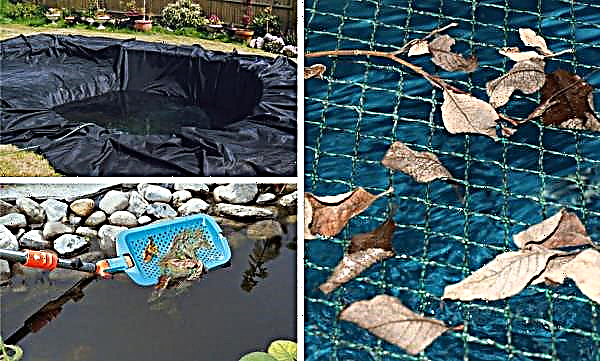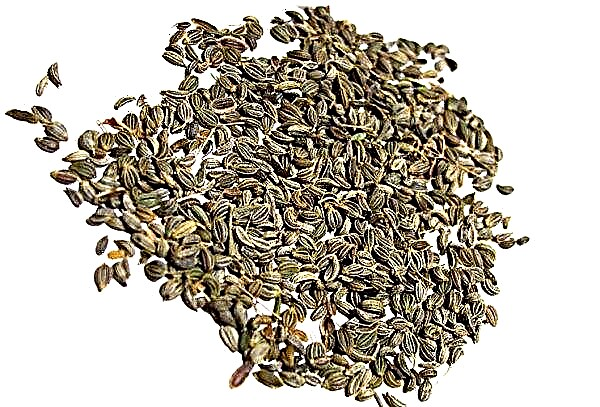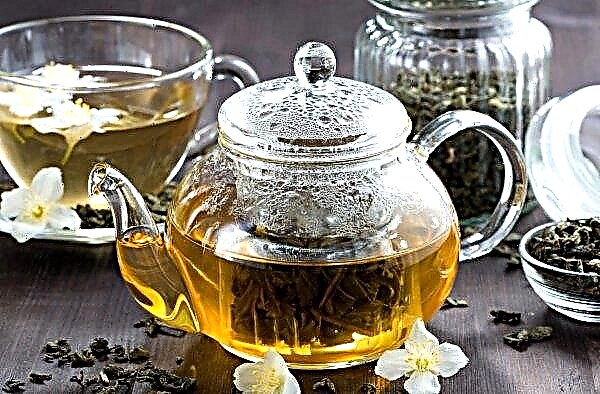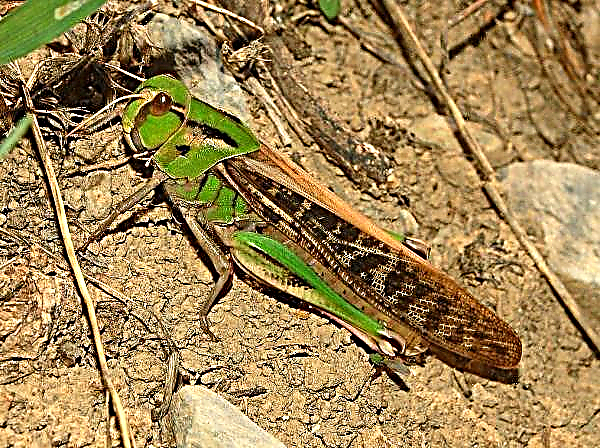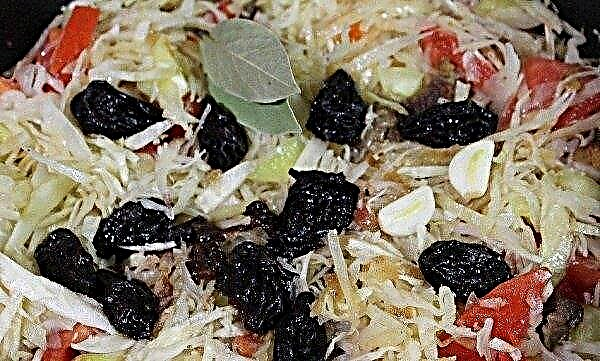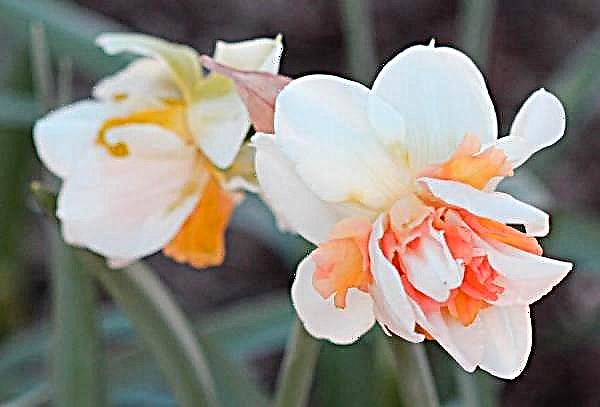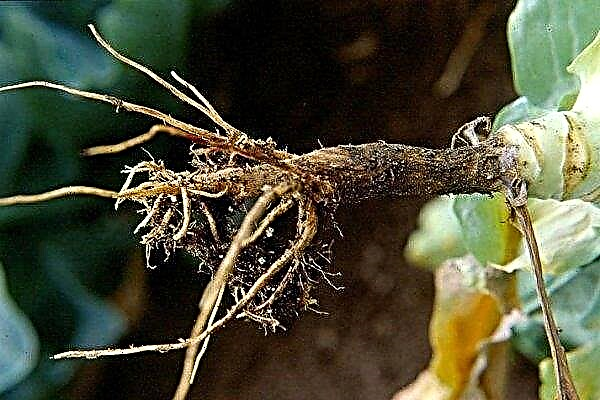Crossandra is not the most common plant among lovers of indoor flowers: probably due to the low popularity of the culture and its reaction when the conditions of detention are not observed. It does not fade or die, but to restore its normal appearance and start a new flowering, it is necessary to expend some effort. Today’s article will talk about the required conditions for growing crossander.
Botanical description of the plant
Crossandra belongs to the Acanthus family. Among more than 50 species, only two representatives of the man managed to cultivate - funnel-shaped and prickly. Prickly on home windowsills is much less common, but funnel-shaped hybrids have recently gained deserved popularity. The birthplace of the flower are the African tropics, India and Sri Lanka. With careful care, the plant can bloom for almost six months - from mid spring to mid autumn. The flowers are quite spectacular, in the form of small funnels of a soft apricot color.
| Index | Value |
| Root system | Average |
| Stem | Straight, branched |
| Leaf shape | Oval, tapering towards the end |
| Leaf color | Bright green shiny |
| Flower shape | Asymmetric funnel with wide petals |
| Flower color | Yellow, apricot, red |
| Fruit shape | Rounded, with 4 seeds |
| Fruit color | Green |
Main types
As mentioned above, indoor species of crossander are funnel-shaped and prickly, several different hybrids are also formed.
So at home you can grow the following types of plants:
- Funnel-shaped. The main species from which the remaining plants were formed. Homeland are India and Sri Lanka. Under indoor conditions, the bush grows up to 70 cm, and in nature - up to 1 m. The flower funnels have a fiery color and a large diameter of about 3 cm.
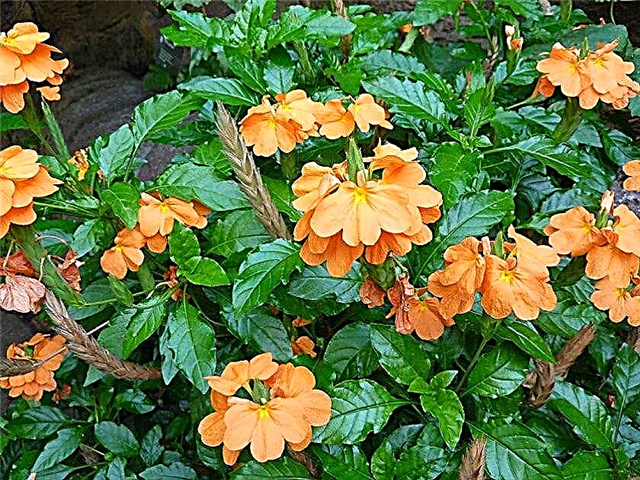
- Prickly. African plant up to 50 cm high with beautiful veined leaves. In the bracts there are small soft "spines". The flowers of this crossandra are yellow and orange.

- Nile. Another African species that is not common on window sills. Red flowers and a light edge on the dark green leaves have a very decorative look.

- Guinean. A rare and stunted species - the height of the plant does not exceed 30 cm. The flowers have a lilac or soft lilac hue, unusual for the culture in question.

- "Blue Ice". Such a crossander is rarely found in collections of flower growers, since the indicators of the species are underestimated - poor flowering with a lack of splendor and saturation.
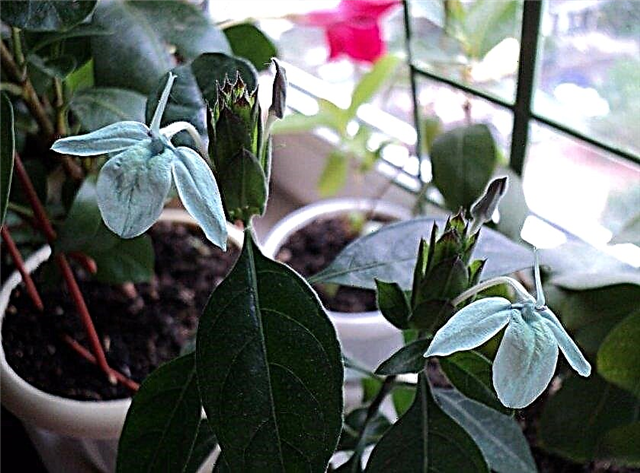
- Green ("Green Ice"). It looks like a blue crossandra, but the color is more intense and there are different shades of turquoise.
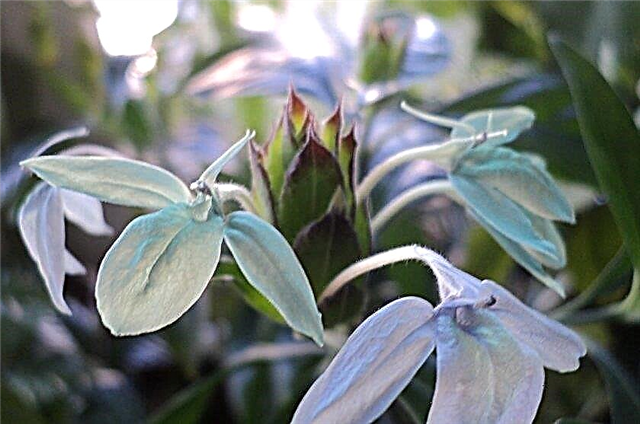
House growing conditions
Even a plant adapted to our conditions needs care that is close to the natural habitat.
Lighting
The bush can feel normal with diffused bright lighting that will not burn the foliage and will favorably affect growth. The pot is installed on the eastern and western windowsills; when kept in more sunny places, the brightness is dimmed with the help of blinds, light curtains, paper or tinted glass. Inadequate lighting is just as harmful as excessive: when there is little light, the plant slows down in growth, blooms little, and can even drop leaves.
Important! In winter, the pot can also be placed on the illuminated southern window - the winter sun rarely leaves the clouds and is not as destructive as the summer one. Thus, you can maximize the use of short daylight hours.
Ventilation
The plant likes moist and fresh air, but one should not get carried away with airing. Crossandra, like many other indoor plants, is very critical of drafts. Therefore, when ventilating the room, it is necessary to make sure that the pot is not in cross streams of dry air - near a working air conditioner or heater. But a natural light gust of wind will not be a problem for the plant.
Temperature mode
The temperature may vary significantly in winter and summer. In the cold season, the room should be at least + 18 ° C. For small periods of time (for example, an emergency shutdown of heating), a temperature drop of up to + 16 ° C is allowed. In the warmer months, the optimum temperature for crossandra is + 25–28 ° С. An increase in the readings of the thermometer can lead to wilting of the flower.
Crossandra care at home
Crossandra is a plant that feels great with quality care. How to properly care for her is discussed below.
Watering
During flowering, crossander requires abundant and frequent watering - 3-4 times a week. In the autumn period, watering is performed 1-2 times a week, and in winter - 1 time per week. Soft irrigation water without lime impurities is used for irrigation. The water temperature should be comfortable - room or a little cooler. No need to arrange the plant stress by pouring it with cold water.
Important! Care of the crown should be carried out several times a year, since the plant is fast-growing and you can’t forget to follow its appearance.
Water the described culture under the root so that drops of water do not fall on the leaves or flowers. The liquid should not accumulate in the pan - this can lead to suppuration or acidification of the roots and subsequent death of the plant. The soil is in a slightly dry state, so irrigation is designed to moisten it qualitatively. Moisture is absorbed by the plant, and with good drainage, its excess flows into the pan and pours out.
Spraying
Creating tropical-like conditions involves humidifying the air near the plant. It is not necessary to spray the leaves, but the space near the pot so that the moisture is in suspension. If conditions allow, you can install a humidifier that will create the desired climate throughout the room. With humidification and spraying, you do not need to get carried away, since excess moisture often leads to the opposite effect: on a healthy bush, the foliage can change color and curl, and the roots will rot.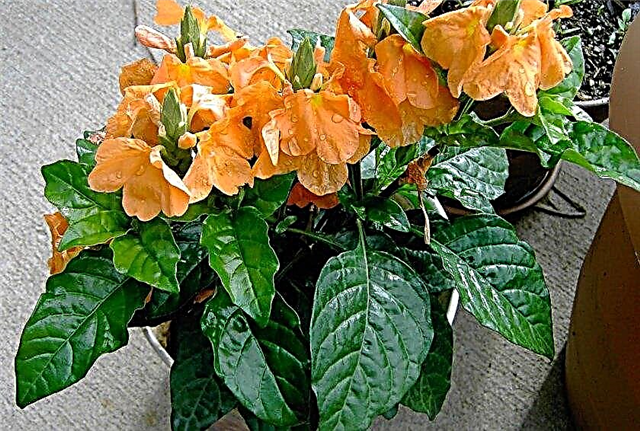
Top dressing
It is necessary to feed the crossander regularly: in the spring-autumn period, weekly, in the autumn-spring period - once every two weeks. Self-production of fertilizers is impractical. The modern chemical industry creates suitable top dressings not only for plant families, but even for their individual representatives. For crossandra, liquid fertilizers for non-acidic soil are suitable. The composition should be diluted with pure water in a ratio of 1: 1 and clearly follow the instructions for use of the drug.
Pruning
In early spring and when the plant ceases to bloom, it needs to form a crown. To do this, remove a third of the length of all shoots, as well as all disproportionate branches. In addition to creating a beautiful bush, you need to monitor its health - all dry or withering stems and leaves are removed, and overgrown shoots are nipped.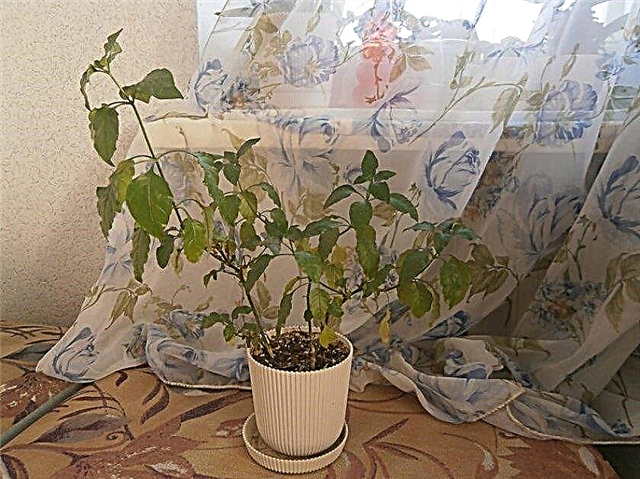
Transfer
Crossander should be transplanted into a new tank every spring. If necessary (the volume of the pot did not fit or the plant grew too quickly from the previous one), the transplant can be carried out at any time of the year, however, the bush can hardly transfer such changes.
The decision on any changes in the life of the plant should be made based on the appearance of its roots. Their excessive development suggests that the current pot is cramped, and stunting may mean that new soil, temperature conditions or irrigation schedules are not suitable.
When transplanting, the soil completely changes: this is done in order to exclude the possibility of penetration of parasites from the previous one. Also, a new substrate is selected or compiled taking into account possible problems with the previous one.
Breeding
Crossandra is propagated in two ways - by cuttings and seeds. The first method is simpler and more common among gardeners.
Cuttings
Of the most viable shoots, cuttings up to 15 cm long are cut, which are planted in a soft and neutral mixture - turf, peat, leafy soil and humus. Rooting occurs in a month. During this period, the cuttings need to maintain a comfortable temperature - + 20–22 ° С. In a greenhouse, rooting will be faster. Cuttings with roots are transplanted into pots with a substrate for an adult plant and high-quality drainage.
Seeds
The fruit of the plant contains four seeds that can be used for reproduction. To improve germination, the seeds are soaked in water for several hours. After this, the swollen material is planted in a tank with a mixture of peat and coarse sand. Pots are covered with foil and put into place with bright dim lights.
Did you know? Crossandra was introduced to Europe in 1817. More than a century she used Especially popular until in 1950 in Sweden the indoor hybrid Mona Wallhead was bred, which felt great when grown in a pot.
With proper care, after 3 weeks, seedlings will appear that need to be carefully watered after being under the film - as the top of the soil dries. After a month, the stronger sprouts are planted in separate pots. This operation encourages young bushes to bloom as soon as possible.
Growing difficulties
With proper care, the crossander does not cause any particular problems. Delay in flowering or defeat by pests is possible, but these troubles can be completely corrected.
Does not bloom
Sometimes a situation arises when flowering does not occur in the predicted time or occurs not too intensively. Most often this is due to insufficient lighting of the plant or too short daylight hours. It is necessary to change the window sill to a more lighted one, and regulate the length of daylight hours with lighting devices. Another cause of the flowering problem may be the weakness of the bush, which lacks the strength to form new ovaries. In this case, you need to remove all sluggish leaves and branches, as well as cut off the buds that have already faded or are finishing flowering. Every 3-4 years, the plant is rejuvenated - old shoots are cut to give strength to the young.
Another cause of the flowering problem may be the weakness of the bush, which lacks the strength to form new ovaries. In this case, you need to remove all sluggish leaves and branches, as well as cut off the buds that have already faded or are finishing flowering. Every 3-4 years, the plant is rejuvenated - old shoots are cut to give strength to the young.
Disease
Crossandra is sick most often due to improper care.
Her common diseases:
- Root decay - this happens due to excessive watering or too acidic soil. It is necessary to transplant the bush into a new substrate and carefully regulate watering.
- Twisting, darkening the tips or falling leaves - caused by overdrying the soil, which is detrimental to this representative of the tropics. It is necessary to transplant the plant into wet peat, put in a shaded place and spray regularly.
- Leaf burns - the result of direct sunlight. Before recovery, the plant is placed in the shade, the leaves can be sprayed and wiped with a wet, natural cloth.
- Yellowing leaves - insufficient amount of nutrients. It is necessary to revise the scheme and the amount of top dressing.
- Leaf mold. Affected leaves are removed, and the entire bush is sprayed with fungicide.
Important! Yellowing of the leaves of the crossander may indicate a lack of nutrition, as well as a symptom of rotting of the roots. In the first case, the leaves are elastic, in the second - they become soft.
Pests
The plant has three main pests: spider mite, aphid and mealybug. Most often, they move from their more susceptible neighbors on the windowsill. Leaves and shoots are regularly inspected for possible pests. If a small localized accumulation of parasites is detected, the soil is covered with a film, and insects and their larvae are washed off with a stream of water at room temperature. In case of serious damage to the bush by pests, it must be treated with insecticides, in particular, acaricides (directed against ticks). It is not worth delaying in case of parasite damage, since the plant will simply die.
Signs and superstitions
People often attribute to plants some miraculous power and believe in the signs that are associated with them. Crossander is no exception - it is believed that this flower brings success and prosperity to its owners. In India, women before going to the temple, as well as for the wedding ceremony, decorated their hair with the flowers of this plant. Crossander will respond to proper care with quality growth and lush flowering of the bush. This will not only decorate the room, but also give a good mood to its owners.







